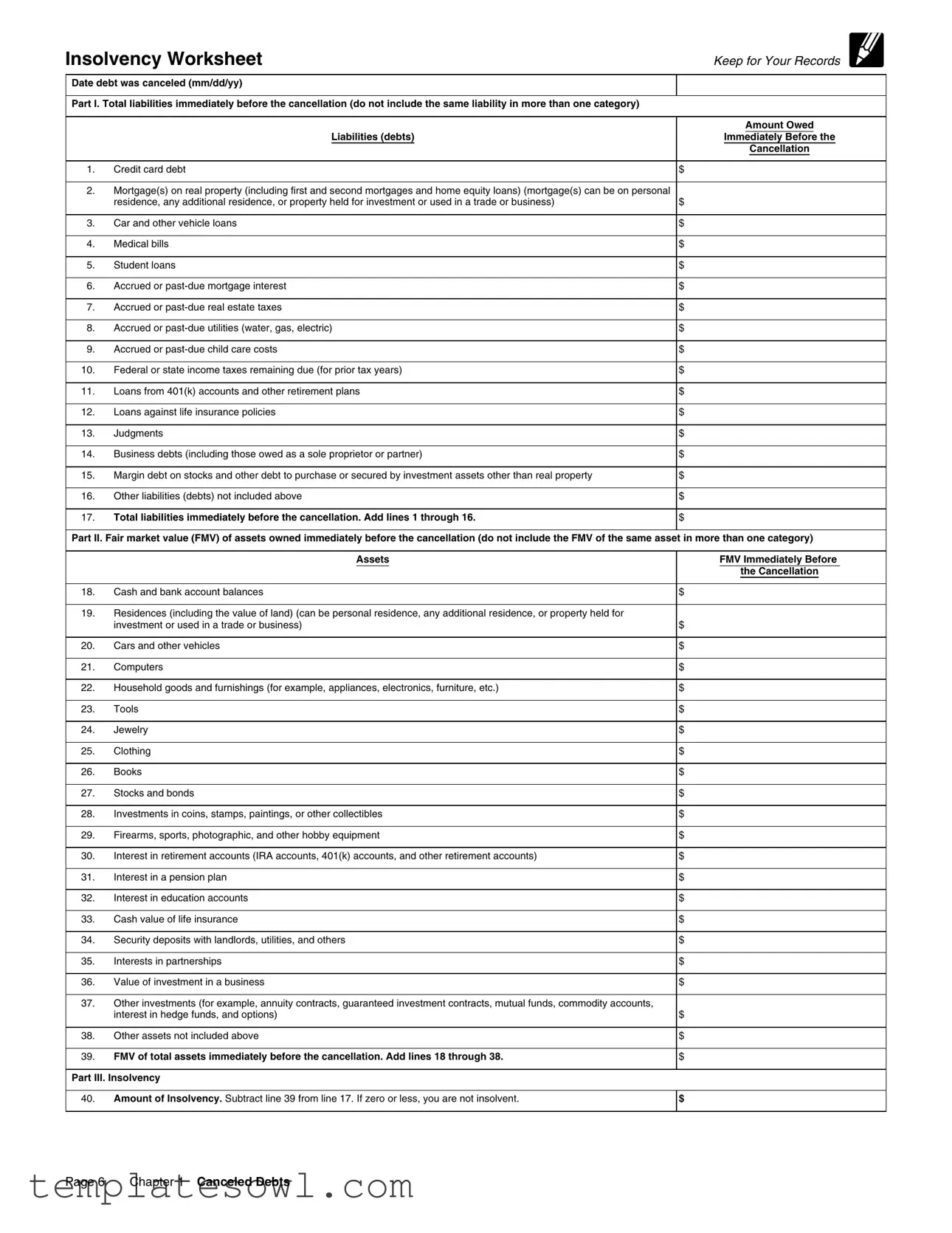What is the Insolvency IRS form?
The Insolvency IRS form is a worksheet used to determine if an individual is insolvent at the time debts are canceled. When liabilities exceed assets, one may be eligible to exclude some canceled debts from taxable income. This form facilitates the calculation, ensuring accurate reporting to the IRS.
Who needs to fill out this form?
This form is typically necessary for individuals who have had their debts canceled, which might include credit card debt, mortgages, or student loans. If one's total liabilities exceed total assets, filing this form can help in managing tax implications from canceled debts.
How do I calculate my total liabilities?
To calculate total liabilities, list all debts immediately before the debt cancellation. This includes credit card debts, mortgage balances, vehicle loans, medical bills, and any other relevant liabilities. Next, sum these amounts to achieve the total liability figure.
What should I include in my asset calculation?
When calculating assets, consider various categories such as cash, property, vehicles, and personal items. Fair market value is vital, meaning you should estimate what these assets would sell for in the current market. Ensure not to double-count any assets in multiple categories.
What does it mean to be insolvent?
Being insolvent means that your total liabilities exceed your total assets. If the value of what you owe is greater than what you own, you are considered insolvent. This status can be significant for understanding tax responsibilities related to canceled debts.
What should I do if my insolvency amount is zero or less?
If the insolvency amount, calculated by subtracting total assets from total liabilities, is zero or below, you are not considered insolvent. Thus, any canceled debt may be taxable. In such cases, it’s advisable to speak with a tax professional to understand your options.
Can I keep a copy of my completed form?
Yes, it’s essential to keep a copy of the completed Insolvency IRS form for your records. This documentation may be useful in future tax filings or if the IRS requires additional information regarding your financial situation.

